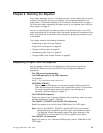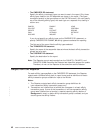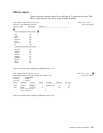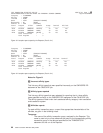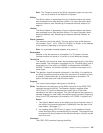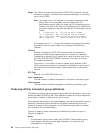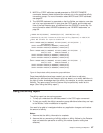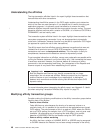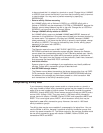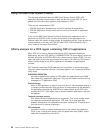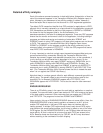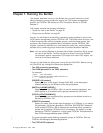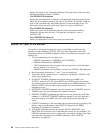
to be convinced that it is related to a terminal or userid. Change this to LUNAME
or USERID (and correct the lifetime) if you know that the affinity really is terminal-
or userid-related. You may want to prevent worsening by specifying
WORSEN=NO.
v Remove affinity lifetime worsening
An LUNAME affinity with a lifetime of LOGON, or a USERID affinity with a
lifetime of SIGNON, may be worsened to SYSTEM or PERMANENT because the
Detector cannot always observe log offs or sign offs. Change this to LOGON or
SIGNON if you know that to be the correct lifetime.
v Change LUNAME affinity relation to USERID
An LUNAME affinity group may be both LUNAME and USERID, because all
instances of all transactions in the group were initiated from the same terminal by
the same userid. This appears in the report as LUNAME, because LUNAME
takes precedence. If you know that the affinity is primarily userid-related, change
the affinity to USERID. (This may be indicated by other, similar, affinity groups
appearing in the report with USERID.)
v Add WAIT affinities
The Reporter reports the use of WAIT EVENT, WAITCICS, and WAIT
EXTERNAL commands as transaction-system affinities, because the Detector
cannot detect the corresponding posting of the ECBs being waited upon. Identify
the posting transactions and create affinity transaction groups to describe the
affinities. The output from the Scanner may be particularly useful here, because it
finds programs that issue MVS POST commands.
v Add other affinities
Scanner output or your knowledge of your applications may identify additional
affinities. Create affinity transaction groups to describe them.
v Add GETMAIN storage sharers
The Detector cannot detect transactions that share storage other than via EXEC
CICS commands. Although it detects GETMAIN SHARED/FREEMAIN affinities,
the address of the storage may have been passed to a third transaction. Add
such transactions to the affinity transaction group.
Compressing affinity data
If your temporary storage queue names contain a unique counter or a termid, a
very large number of basic affinity transaction groups may be created for what may
seem to be a small number of logical queues. For example, consider the queues
ABCD0001 through ABCD1000, whose names comprise a fixed part (ABCD) and a
counter (0001 through 1000). They may result in 1000 basic affinity transaction
groups, each with relation, LUNAME, lifetime PCONV, and transactions ABCD and
ABCE. This is one logical queue, ABCD*, which causes an affinity that may be
described by one affinity transaction group. However, the result is 1000 basic
affinity transaction groups.
The affinity data may be more readable if compressed to its logical form. You can
use the Builder to do this, because it combines all affinity transaction groups that
contain the same transaction ID. The Builder output for the previous example would
be one affinity transaction group with relation LUNAME, lifetime PCONV, and
transactions ABCD and ABCE.
Chapter 6. Running the Reporter 49



